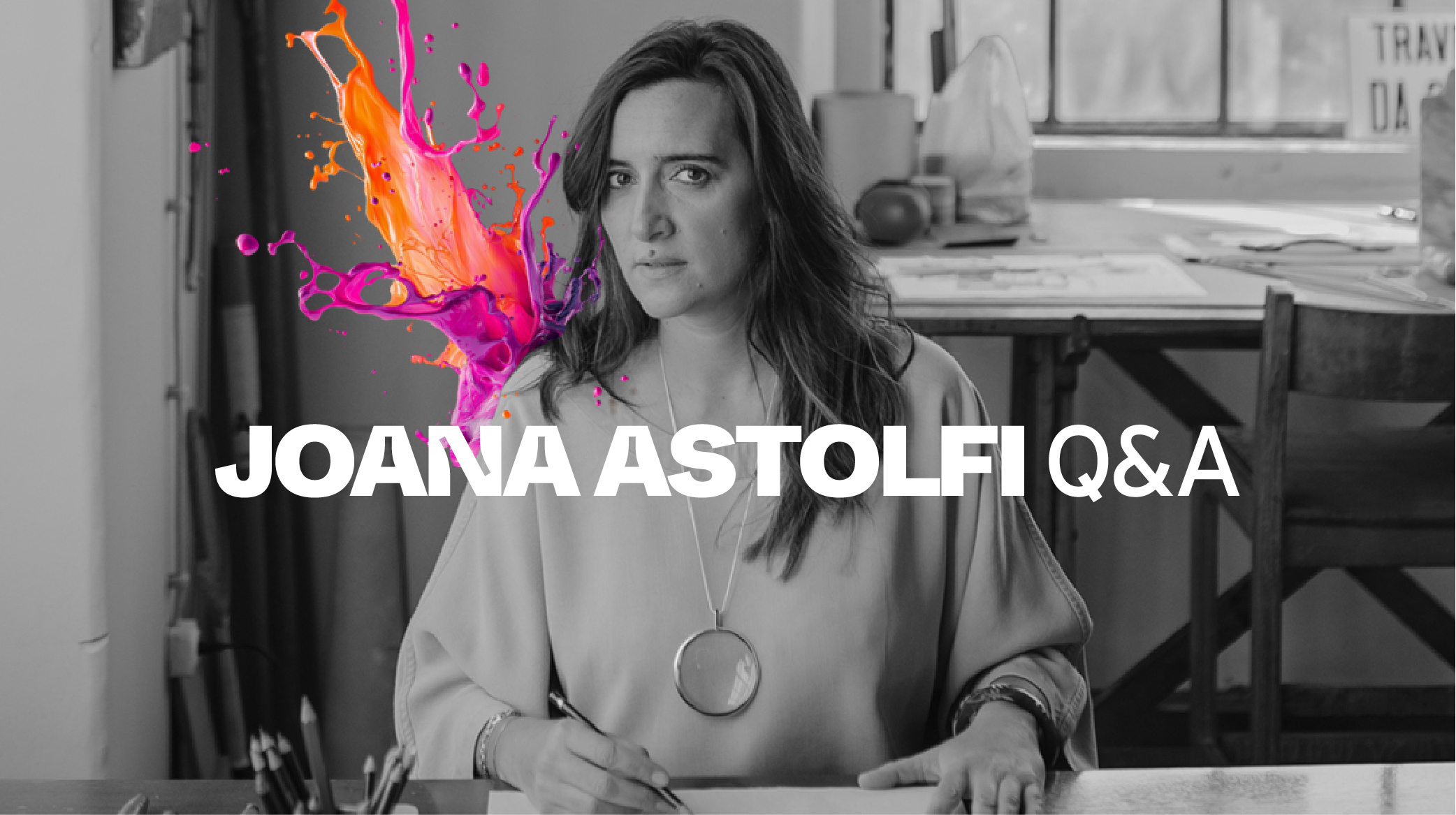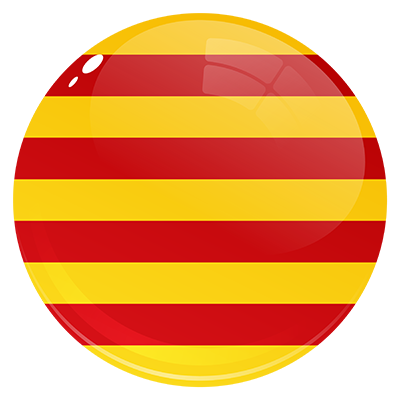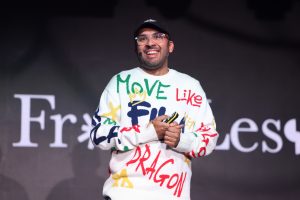
JOANA ASTOLFI Q&A
What role does collaboration play in your creative process?
I think the cross-pollination of different creative fields, and different creatives in those fields, is very important, absolutely, and it’s fundamental to my work. I have a team of 15, 20 people and it’s a constant everyday brainstorm. We sit in meetings where we discuss the idea, from the beginning conceptual phase until realisation, both in the interior design department and in the arts department. All this exchange is very important.
I also love working with artisans. This is another area that fills my world a lot. It’s a different kind of interaction. It’s more me leading the creativity and them helping me to find solutions, to physicalise these things I’m creating. From basketry to ceramics to glassblowers, I love this world. I think it’s about the interaction and exchange of ideas. We don’t, as artists, create anything completely from scratch anymore. That’s very clear to me after 20 years of working with my studio. We’ve got a hardcore, intense and profound ‘hard drive’ in our brains. For me, at least, it’s like that. I scan things around me and I’m always very attentive to the details. That’s where I go to get the trigger points from things that I’ve seen from other artists, from books, from travel.
Creativity today is transversal. It crosses everything. I think that’s something that’s become very clear for me, and I need that. I need it for my inspiration. I could never work alone in a room and not be exposed to different ideas, different inputs, different triggers.
All creatives have their own inner world, which is usually connected to their ego. An artist has to have an ego. Picasso was the epitome of that, obviously, and he was the biggest genius ever for me. But we need to have our world too. I have a daughter that I love, Duna, but I also have my own world where it’s just me and my creativity and my way of being alone. But I’m also a very communicative person. I’m empathetic. I like to hear and share ideas. I think it has to do with each individual artist’s personality. Some are very porous and enjoy that way of working. Some, not so much. It’s related to what kind of work you do as an artist or a creative. If you’re a fine artist, painting canvases, it’s normal that you’re probably going to be working alone. But if you’re working with architecture, with product design, usually you have a team, and that requires certain characteristics.
I’m the mentor of our studio. I don’t believe in hierarchies. It’s very horizontal, the way we work as a team, as a family. But I do, I think, I lead by inspiration.
Why do you think it is so important for diverse voices and experiences to be represented in creative endeavour?
It’s about balance. The most important thing here for me is the person I have beside me that structures the studio, takes decisions with me and asks me on a monthly basis “what are your dreams, Joana, where do you want to go, what would you like to be doing now?” Which is great, because I have a lot of dreams!
Usually, projects come into our studio by invitation. Then we’ll gather all that information together and start seeing what we can do to make it happen. We have a CFO, of course, who is a pillar in my life, often telling me that I’m spending too much. I pay all these people to tell me off, basically, to put me in my place. I say there’s only space for one diva in the studio! I follow their advice though. We’re all working in the same direction, helping the studio to grow in a way we feel has the [most] potential.
How is tech influencing your own creativity, both now and in the future?
I am a [passionate defender] of custom made, unique, tailor made spaces and objects. That’s what I live for. That’s where my creativity goes. I like a hammer and nails much more than a digital device. I love crafts. I love feeling things, materials, textures, in my hands.
I do love my Mac, however. It’s a beautiful little object. In more and more of our projects – from hotels to houses to the headquarters of a big insurance company that we’re designing – they want a lot of digital interventions like plasmas, touchscreens and so on. We’re collaborating a lot with digital partners, but I don’t get very involved in that layer. We also do art installations and window displays, and my big inspiration, my fallback, is always on art. It’s what keeps me going. Otherwise I couldn’t have an architecture studio. Architecture takes a long time, long journeys, and they get tiring.
I understand the importance of digital technology, but it’s a layer that doesn’t really interest me that much. I like objects where the passage of time goes through them. I like to talk to the artisans I find in the south of Portugal and in other countries. I collect little things that remind me of my trips. I print my photos, because I know that one day my phone will be lost along with all of these beautiful images that I took. I need to see things physicalised. I’m about objects. I think craft is the new luxury.
What creative projects have you got coming up that you’re particularly excited about?
We always have about 10 projects, more or less, running in parallel. Right now we are doing a very special, custom-made house in the Alentejo region of Portugal. The whole house is a work of art. It’s a mixture between raw and art deco, and everything is drawn to the smallest details. The wooden doors are carved with beautiful etchings. So I’m very excited to see this project come to life.
I just finished a hotel in the Douro Valley. That was a very long project. It has 40 rooms, all of them different from each other, with a different theme, plus two restaurants and a big spa. So this is a project that everybody can visit now. It’s called Torel Quinta da Vacaria – Douro Valley. I’m really into hotels at the moment.
I did a lot of restaurants for José Avillez – he’s like the Jamie Oliver of Portugal. We did his hotel, which is a 12-room house in the south of Lisbon, with a whole story of him cooking for a big group of people. You rent the whole house together. That suddenly opened up a lot of doors to this world, because we covered everything from the hospitality to the sleeping, the relaxing, the eating, the playfulness. Everything comes together in the hotel, the whole experience, a home away from home.
We’re also designing co-working spaces. Our current project involves six huge buildings with many floors. We’re doing all the common areas, cafeterias and gyms. So our work is very diversified.
The two shopping centers we’re working on are interesting too. They were kind of becoming obsolete, so they asked us to revitalize and refresh them, to humanise the spaces. So it’s a big scale project, but I’ve done two or three, and they went well. It took me a lot of time to accept this kind of project because the scale is too big for me – I prefer the more intimate work.
Then in the arts field, we have Christmas coming up so we have a few proposals, which are interesting. Some window displays, some hotel decorations.
This year I’ve done quite a few collaborations. For example, I designed a tile collection, which came out beautifully. Another collaboration involved designing wicker bags with artisans in the south of Portugal. That’s going to be launched in Porto on 16th of October. It’s going to be super beautiful. And then I did a collaboration with a streetwear brand, where I designed 10 pieces of clothing. The collection is called La Dolce Vita. I want to do more and more of this kind of collaboration. It’s fast, and I have a moment to dance with the brand, you know.
Finally, we’re designing a restaurant in Toronto, which marks a more international direction that I’m pushing for the studio to go.
Joana will be appearing at Blend Barcelona on 8th November 2024. She is a panelist in a Studio Session – also featuring Dora Osinde and Steven Apampa – discussing what it takes to be a creative leader and forward thinker in 2024.
Interview conducted on 23rd September 2024.
Blog Category
- PULSE
- News
- Press Release
- Q&A
Latest Blog
Permission to Play: Manon Dave on Creativity and the Power of Play
Manon Dave sharing his journey, philosophy on creativity, and an...
Read MoreOctober 2024: Gaza art installation confirmed
New Barcelona-based creative industry festival Blend is set to have...
Read MoreOctober 2024: GucciGhost to headline Blend
Exciting new Barcelona-based creative festival Blend set to showcase unseen...
Read MoreSeptember 2024: Creative industry backs new festival
Major global powerhouses Nike, Snapchat and Ogilvy have joined key...
Read More
 CA
CA
 ES
ES

